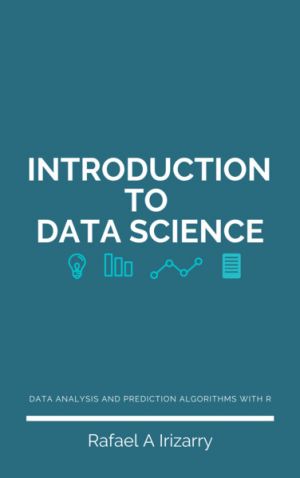Introduction to Data Science
Data Analysis and Prediction Algorithms with R
by Rafael A Irizarry
DescriptionTable of ContentsDetailsHashtagsReport an issue 






Book Description
The demand for skilled data science practitioners in industry, academia, and government is rapidly growing. This book introduces concepts and skills that can help you tackle real-world data analysis challenges. It covers concepts from probability, statistical inference, linear regression and machine learning. It also helps you develop skills such as R programming, data wrangling with dplyr, data visualization with ggplot2, algorithm building with caret, file organization with UNIX/Linux shell, version control with Git and GitHub, and reproducible document preparation with knitr and R markdown. The book is divided into six parts: R, Data Visualization, Data Wrangling, Probability, Inference and Regression with R, Machine Learning, and Productivity Tools. Each part has several chapters meant to be presented as one lecture. The book includes dozens of exercises distributed across most chapters.This open book is licensed under a Creative Commons License (CC BY-NC-SA). You can download Introduction to Data Science ebook for free in PDF format (55.8 MB).
Table of Contents
Part I
R
Chapter 1
Getting Started with R and RStudio
Chapter 2
R Basics
Chapter 3
Programming basics
Chapter 4
The tidyverse
Chapter 5
Importing data
Part II
Data Visualization
Chapter 6
Introduction to data visualization
Chapter 7
ggplot2
Chapter 8
Visualizing data distributions
Chapter 9
Data visualization in practice
Chapter 10
Data visualization principles
Chapter 11
Robust summaries
Part III
Statistics with R
Chapter 12
Introduction to Statistics with R
Chapter 13
Probability
Chapter 14
Random variables
Chapter 15
Statistical Inference
Chapter 16
Statistical models
Chapter 17
Regression
Chapter 18
Linear Models
Chapter 19
Association is not causation
Part IV
Data Wrangling
Chapter 20
Introduction to Data Wrangling
Chapter 21
Reshaping data
Chapter 22
Joining tables
Chapter 23
Web Scraping
Chapter 24
String Processing
Chapter 25
Parsing Dates and Times
Chapter 26
Text mining
Part V
Machine Learning
Chapter 27
Introduction to Machine Learning
Chapter 28
Smoothing
Chapter 29
Cross validation
Chapter 30
The caret package
Chapter 31
Examples of algorithms
Chapter 32
Machine learning in practice
Chapter 33
Large datasets
Chapter 34
Clustering
Part VI
Productivity tools
Chapter 35
Introduction to productivity tools
Chapter 36
Organizing with Unix
Chapter 37
Git and GitHub
Chapter 38
Reproducible projects with RStudio and R markdown
Book Details
Title
Introduction to Data Science
Subject
Computer Science
Publisher
Leanpub
Published
2019
Pages
722
Edition
1
Language
English
PDF Size
55.8 MB
License

Related Books
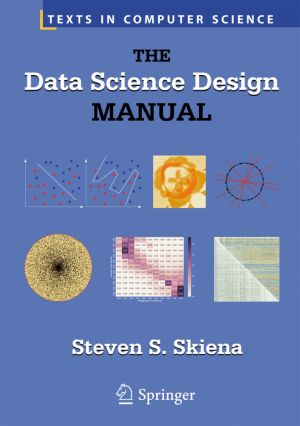
This engaging and clearly written textbook/reference provides a must-have introduction to the rapidly emerging interdisciplinary field of data science. It focuses on the principles fundamental to becoming a good data scientist and the key skills needed to build systems for collecting, analyzing, and interpreting data. The Data Science Design Manual...
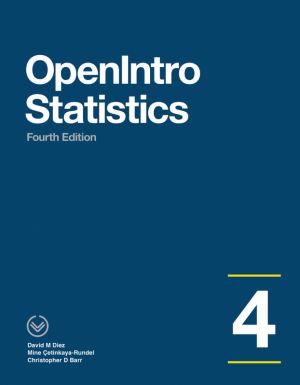
OpenIntro Statistics offers a traditional introduction to statistics at the college level. This textbook is widely used at the college level and offers an exceptional and accessible introduction for students from community colleges to the Ivy League. The textbook has been thoroughly vetted with an estimated 20,000 students using it annually.
Ext...
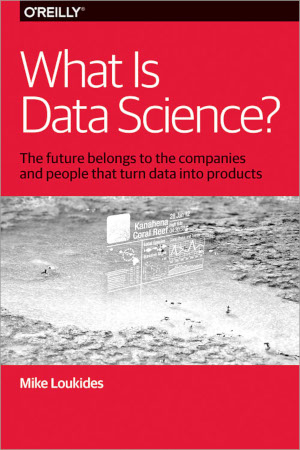
We've all heard it: according to Hal Varian, statistics is the next sexy job. Five years ago, in What is Web 2.0, Tim O'Reilly said that "data is the next Intel Inside." But what does that statement mean? Why do we suddenly care about statistics and about data? This report examines the many sides of data science - the technologi...
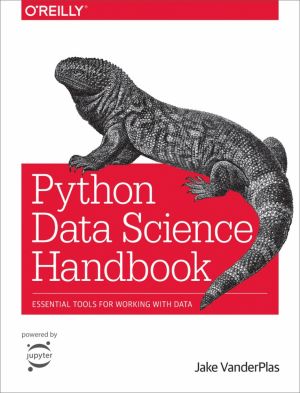
For many researchers, Python is a first-class tool mainly because of its libraries for storing, manipulating, and gaining insight from data. Several resources exist for individual pieces of this data science stack, but only with the Python Data Science Handbook do you get them all - IPython, NumPy, Pandas, Matplotlib, Scikit-Learn, and other relate...
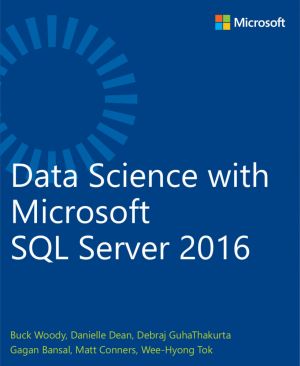
R is one of the most popular, powerful data analytics languages and environments in use by data scientists. Actionable business data is often stored in Relational Database Management Systems (RDBMS), and one of the most widely used RDBMS is Microsoft SQL Server. Much more than a database server, it's a rich ecostructure with advanced analytic ...
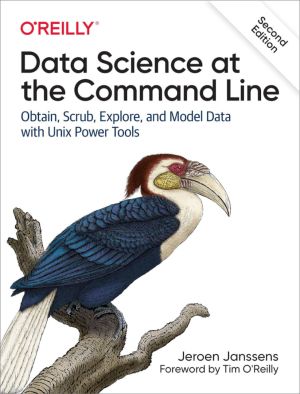
This thoroughly revised guide demonstrates how the flexibility of the command line can help you become a more efficient and productive data scientist. You'll learn how to combine small yet powerful command-line tools to quickly obtain, scrub, explore, and model your data. To get you started, author Jeroen Janssens provides a Docker image packe...

